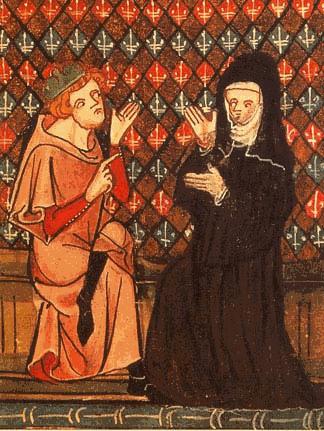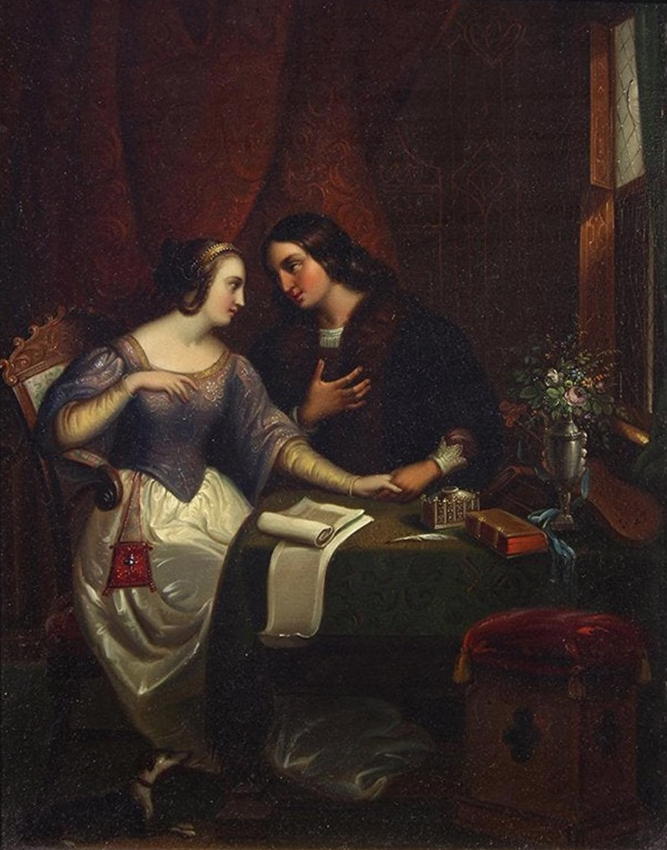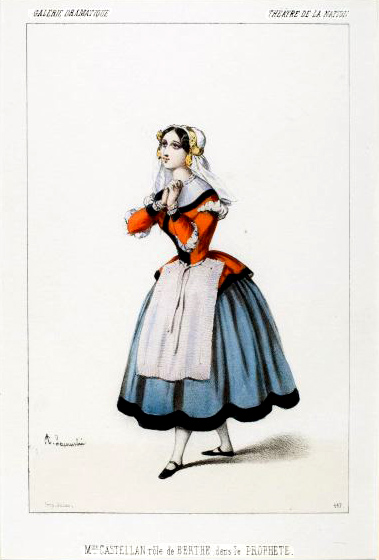|
Sechs Gedichte Und Requiem
''Sechs Gedichte und Requiem'', Opus number, Op. 90, (English: ''Six Poems and Requiem'') also called the ''Lenau-Lieder'', is a song cycle by Robert Schumann. It was composed in 1850, shortly before the Schumanns moved to Düsseldorf. The cycle consists of seven songs. The first six are settings of poems by Nikolaus Lenau. The final song, "Requiem", is a setting of a translation by Lebrecht Blücher Dreves of an anonymous mediaeval poem in Latin. Composition In 1829 Schumann had met the cycle's main librettist, Nikolaus Lenau, in Vienna. But it was in the summer of 1850 that he undertook to set his poems in a cycle. This came at the end of his period in Dresden, where the Schumanns' lives had lately been upturned by the May Uprising in Dresden, violence of 1849. For Schumann, 1850 followed an extremely productive year which saw the composition of piano music such as the ''Waldszenen''; works for solo voice such as the ''Spanisches Liederspiel'' and the declamation '' ... [...More Info...] [...Related Items...] OR: [Wikipedia] [Google] [Baidu] |
Robert Schumann
Robert Schumann (; ; 8 June 181029 July 1856) was a German composer, pianist, and music critic of the early Romantic music, Romantic era. He composed in all the main musical genres of the time, writing for solo piano, voice and piano, chamber music, chamber groups, orchestra, choir and the opera. His works typify the spirit of the Romantic era in German music. Schumann was born in Zwickau, Saxony, to an affluent middle-class family with no musical connections, and was initially unsure whether to pursue a career as a lawyer or to make a living as a pianist-composer. He studied law at the universities of Leipzig University, Leipzig and Heidelberg University, Heidelberg but his main interests were music and Romantic literature. From 1829 he was a student of the piano teacher Friedrich Wieck, but his hopes for a career as a virtuoso pianist were frustrated by a worsening problem with his right hand, and he concentrated on composition. His early works were mainly piano pieces, inclu ... [...More Info...] [...Related Items...] OR: [Wikipedia] [Google] [Baidu] |
Clara Schumann
Clara Josephine Schumann (; ; née Wieck; 13 September 1819 – 20 May 1896) was a German pianist, composer, and piano teacher. Regarded as one of the most distinguished pianists of the Romantic music, Romantic era, she exerted her influence over the course of a 61-year concert career, changing the format and repertoire of the piano recital by lessening the importance of purely virtuoso, virtuosic works. She also composed solo piano pieces, a Piano Concerto (Clara Schumann), Piano Concerto, chamber music, choral pieces, and songs. She grew up in Leipzig, where both her father Friedrich Wieck and her mother Mariane Bargiel, Mariane were pianists and piano teachers. In addition, her mother was a singer. Clara was a child prodigy, and was trained by her father. She began touring at age eleven, and was successful in Paris and Vienna, among other cities. She married the composer Robert Schumann, on 12 September 1840, and the couple had eight children. Together, they encouraged Johan ... [...More Info...] [...Related Items...] OR: [Wikipedia] [Google] [Baidu] |
Musical Settings Of Poems By Nicolaus Lenau , the ability to perceive music or to create music
*
{{Music disambiguation ...
Musical is the adjective of music. Musical may also refer to: * Musical theatre, a performance art that combines songs, spoken dialogue, acting and dance * Musical film and television, a genre of film and television that incorporates into the narrative songs sung by the characters * MusicAL, an Albanian television channel * Musical isomorphism, the canonical isomorphism between the tangent and cotangent bundles See also * Lists of musicals * Music (other) * Musica (other) * Musicality Musicality (''music -al -ity'') is "sensitivity to, knowledge of, or talent for music" or "the quality or state of being musical", and is used to refer to specific if vaguely defined qualities in pieces and/or genres of music, such as melodiousnes ... [...More Info...] [...Related Items...] OR: [Wikipedia] [Google] [Baidu] |
Song Cycles By Robert Schumann
A song is a musical composition performed by the human voice. The voice often carries the melody (a series of distinct and fixed pitches) using patterns of sound and silence. Songs have a structure, such as the common ABA form, and are usually made of sections that are repeated or performed with variation later. A song without instruments is said to be a cappella. Written words created specifically for music, or for which music is specifically created, are called lyrics. If a pre-existing poem is set to composed music in the classical tradition, it is called an art song. Songs that are sung on repeated pitches without distinct contours and patterns that rise and fall are called chants. Songs composed in a simple style that are learned informally by ear are often referred to as folk songs. Songs composed for the mass market, designed to be sung by professional singers who sell their recordings or live shows, are called popular songs. These songs, which have broad appeal, are ... [...More Info...] [...Related Items...] OR: [Wikipedia] [Google] [Baidu] |
Pierre Bernac
Pierre Louis Bernac (né Bertin; 12 January 1899 – 17 October 1979) was a French singer, a baryton-martin, known as an interpreter of the French mélodie. He had a close artistic association with Francis Poulenc, with whom he performed in France and abroad. Poulenc wrote 90 songs for him during their 25-year musical partnership. Bernac was well known as a teacher; among the singers who studied with him were Elly Ameling, Grace Bumbry, Mattiwilda Dobbs, Carol Neblett, Jessye Norman and Gérard Souzay. He gave masterclasses in France, Britain and the US. In retirement, Bernac wrote two highly regarded books about the interpretation of mélodies in general and Poulenc's in particular. Life and career Early years Born Pierre Bertin in Paris on 12 January 1899, he started his working career in his father's brokerage house. He later changed his surname to Bernac to avoid confusion with the actor Pierre Bertin.Schmidt, p. 216 He began taking singing lessons at the age of 18 ... [...More Info...] [...Related Items...] OR: [Wikipedia] [Google] [Baidu] |
Francis Poulenc
Francis Jean Marcel Poulenc (; 7 January 189930 January 1963) was a French composer and pianist. His compositions include mélodie, songs, solo piano works, chamber music, choral pieces, operas, ballets, and orchestral concert music. Among the best-known are the piano suite ''Trois mouvements perpétuels'' (1919), the ballet ''Les biches'' (1923), the ''Concert champêtre'' (1928) for harpsichord and orchestra, the Organ Concerto (Poulenc), Organ Concerto (1938), the opera ''Dialogues des Carmélites'' (1957), and the ''Gloria (Poulenc), Gloria'' (1959) for soprano, choir, and orchestra. As the only son of a prosperous manufacturer, Poulenc was expected to follow his father into the family firm, and he was not allowed to enrol at a music college. He studied with the pianist Ricardo Viñes, who became his mentor after the composer's parents died. Poulenc also made the acquaintance of Erik Satie, under whose tutelage he became one of a group of young composers known collectively ... [...More Info...] [...Related Items...] OR: [Wikipedia] [Google] [Baidu] |
Dichterliebe
''Dichterliebe'', ''A Poet's Love'' (composed 1840), is the best-known song cycle by Robert Schumann ( Op. 48). The texts for its 16 songs come from the ''Lyrisches Intermezzo'' by Heinrich Heine, written in 1822–23 and published as part of Heine's ''Das Buch der Lieder''. Along with the song cycles of Franz Schubert ('' Die schöne Müllerin'' and ''Winterreise''), Schumann's form the core of the genre in musical literature. Source: Heine's ''Lyrisches Intermezzo'' Author of the sarcastic ''Die Romantische Schule'', Heine was a vocal critic of German romanticism, though he is often described as a quintessentially Romantic writer. In some of his poetry, and notably in '' Deutschland. Ein Wintermärchen'' (1844), romantic lyrical conventions are used as vessels to deploy biting, satirical nature. ''Dichterliebe'' was composed before Heine's ''Deutschland'' and does not ''appear'' to portray this ironic dimension: scholarship is divided as to what extent Schumann intended to expr ... [...More Info...] [...Related Items...] OR: [Wikipedia] [Google] [Baidu] |
John Daverio
John Joseph Daverio (October 19, 1954 – March 16, 2003) was a violinist, scholar, teacher and author, best known for his writings on the music of Robert Schumann and Johannes Brahms. His research interests centered around Austro-German composers including J. S. Bach, Mozart, Schubert, Wagner and Post-Romantic composers such as R. Strauss and Mahler. Just before his sudden death, he was exploring the concept of "late Style" in the music of Haydn, Mozart, and Beethoven. All of his writings feature the relation of music to literature and philosophy. Daverio was born in Sharon, Pennsylvania, the only son of Italian-American parents. He was a professor of music at Boston University and chairman of the CFA school of music musicology department and of the CAS and GRS department of music and ad interim director of the school of music; Daverio received the University's Metcalf Award for Excellence in Teaching. Daverio died under mysterious circumstances, drowning in the Charles Rive ... [...More Info...] [...Related Items...] OR: [Wikipedia] [Google] [Baidu] |
Abélard
Peter Abelard (12 February 1079 – 21 April 1142) was a medieval French scholastic philosopher, leading logician, theologian, teacher, musician, composer, and poet. This source has a detailed description of his philosophical work. In philosophy he is celebrated for his logical solution to the problem of universals via nominalism and conceptualism and his pioneering of intent in ethics. Often referred to as the " Descartes of the twelfth century", he is considered a forerunner of Rousseau, Kant, and Spinoza. He is sometimes credited as a chief forerunner of modern empiricism. In Catholic theology, he is best known for his development of the concept of limbo, and his introduction of the moral influence theory of atonement. He is considered (alongside Augustine) to be the most significant forerunner of the modern self-reflective autobiographer. He paved the way and set the tone for later epistolary novels and celebrity tell-alls with his publicly distributed letter, '' The His ... [...More Info...] [...Related Items...] OR: [Wikipedia] [Google] [Baidu] |
Héloïse
Héloïse; c. 1100–01? – 16 May 1163–64?), variously Héloïse d'ArgenteuilCharrier, Charlotte. Heloise Dans L'histoire Et Dans la Legende. Librairie Ancienne Honore Champion Quai Malaquais, VI, Paris, 1933 or Héloïse du Paraclet, was a French nun, philosopher, writer, scholar, and abbess. Héloïse was a renowned "woman of letters" and philosopher of love and friendship, as well as an eventual high ranking abbess in the Catholic Church. She achieved approximately the level and political power of a bishop in 1147 when she was granted the rank of prelate nullius. She is famous in history and popular culture for her love affair and correspondence with the leading medieval logician and theologian Peter Abelard, who became her colleague, collaborator, and husband. She is known for exerting critical intellectual influence upon his work and posing many challenging questions to him such as those in the ''Problemata Heloissae''. Her surviving letters are considered a foundat ... [...More Info...] [...Related Items...] OR: [Wikipedia] [Google] [Baidu] |
Scenes From Goethe's Faust
''Scenes from Goethe's Faust'' (''Szenen aus Goethes Faust'') is a musical-theatrical work by composer Robert Schumann. The work has been described as the height of his accomplishments in the realm of dramatic music.John Daverio: "Schumann, Robert", ''Grove Music Online'' ed. L. Macy (Accessed October 26, 2007), . The work was written between 1844 and 1853 and is scored for SATB chorus, boys' chorus, orchestra, and a number of solo parts which, even with doubling, require seven solo singers, although eight (three sopranos, two mezzos, one tenor, one baritone, and one bass) is the usual number for a performance. Schumann never saw all three parts of the work performed in the same concert, or published together. Eric Sams comments 'There is no coherence in the orchestration, which audibly dates from two different periods (hand-horns in Part III, valve-horns elsewhere)', leading him to conclude that Schumann did not conceive the work as a whole, although late nineteenth-century ideas ... [...More Info...] [...Related Items...] OR: [Wikipedia] [Google] [Baidu] |
Le Prophète
''Le prophète'' (''The Prophet'') is a grand opera in five acts by Giacomo Meyerbeer, which was premiered in Paris on 16 April 1849. The French-language libretto was by Eugène Scribe and Émile Deschamps, after passages from the ''Essay on the Manners and Spirit of Nations'' by Voltaire. The plot is based on the life of John of Leiden, Anabaptist leader and self-proclaimed "King of Münster" in the 16th century. Composition After the brilliant success of their grand opera ''Les Huguenots'' (1836), Meyerbeer and his librettist Scribe decided to collaborate again on a piece based on a historical religious conflict. Meyerbeer's great personal wealth and his duties as official court composer to King Frederick William IV of Prussia meant that there was no hurry to complete the opera; the composition and planning took more than a decade. Performance history ''Le prophète'' was first performed by the Paris Opera at the Salle Le Peletier on 16 April 1849. The production featured cos ... [...More Info...] [...Related Items...] OR: [Wikipedia] [Google] [Baidu] |




